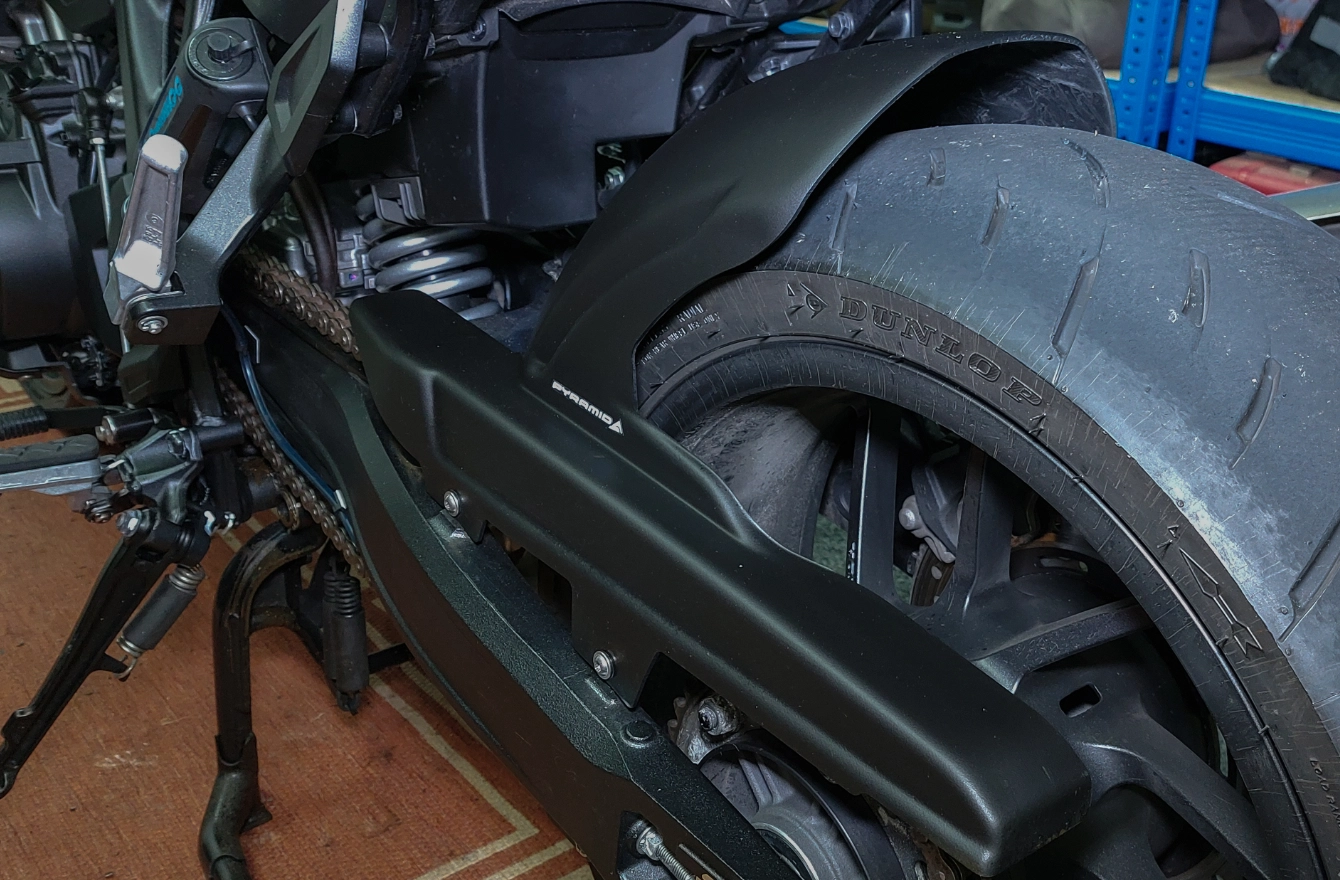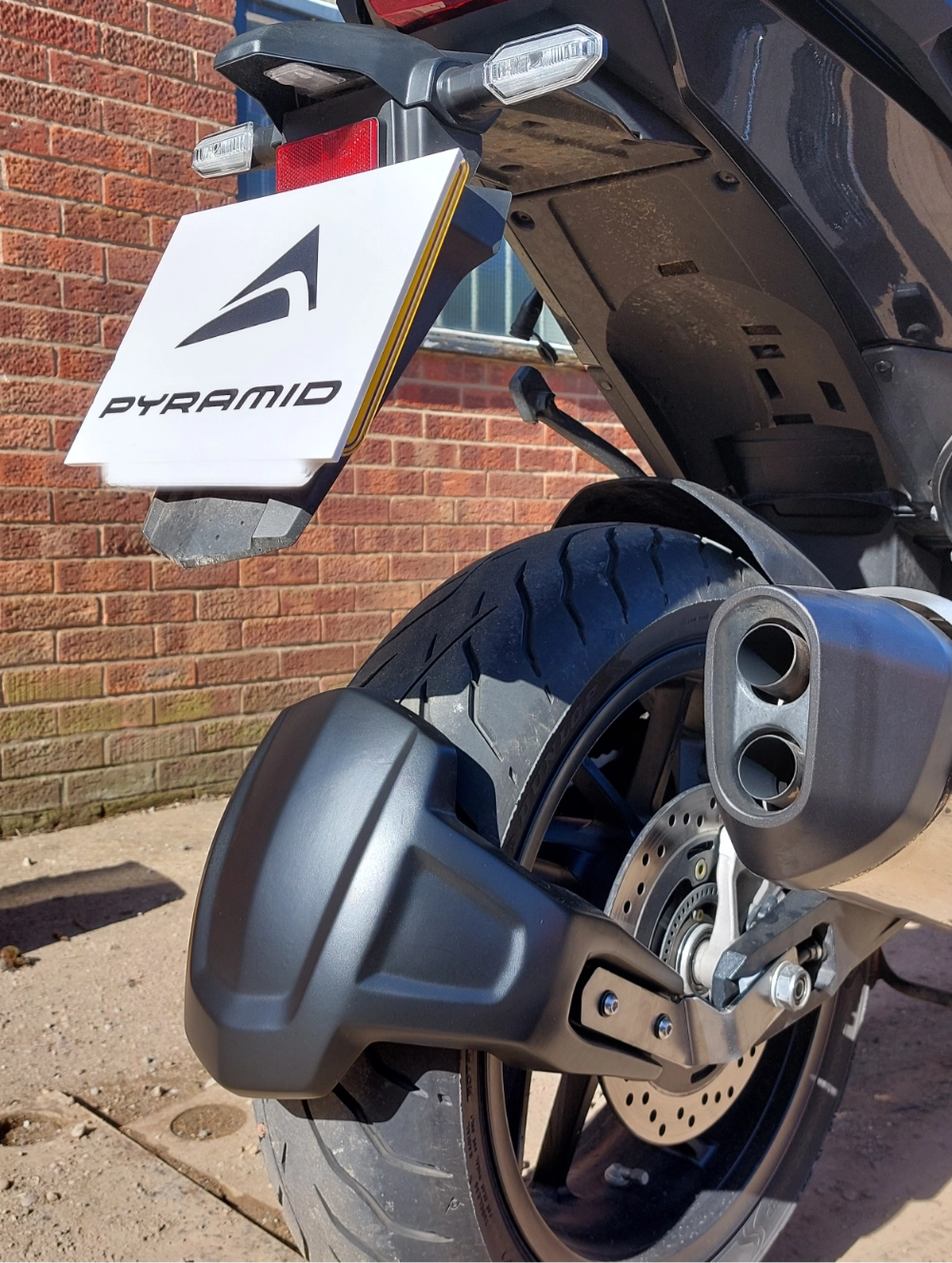I recently fitted a Pyramid Moto rear hugger to my NT1100. As I was putting all the bolts in the required holes, it struck me how easy the job had been. All the holes lined up, all the bolts fitted, and the installation instructions made sense.
Comparing the Pyramid Moto experience to the fun and games I’d had deciphering the instructions that came with the AliExpress hand guards, supposedly 100% compatible with the NT1100, got me wondering what Pyramid had done to make manufacturing motorcycle accessories appear so easy.
The AliExpress handguards do fit the NT1100 – well, sort of – but crash into the screen as the bars approach full lock, which is an MOT failure in the UK. The mounting instructions offer little guidance; perhaps I would understand them better if I could read the Chinese version.
Making something that fits while also moving relative to other parts of the bike made me appreciate the skill that had gone into creating something as “simple” as the rear hugger. This is how I ended up at Pyramid Moto in Gainsborough, having the rear end of my NT1100 scanned.

Could We Scan Your Bike?
About a year ago, I spent a fascinating day at the SW-Motech factory in Germany, where I was shown how they create the frameworks for their luggage.
I’m told that when working with metal, it is easier to create the master template physically. You first make it too big and then reduce it until it is correct. If it is too small, cut it and weld a new piece. It is a skilled process of trial and error to make the master copy, which is then replicated.
With Acrylonitrile Butadiene Styrene, otherwise known as ABS – a thermoplastic material with remarkable toughness, impact resistance, and lightness – the constant trial and error approach would be an expensive and time-consuming option. Creating moulds for either injection moulding or the preferred vacuum forming process isn’t something you want to do several times.
3D scanning allows the design process to be completed using modelling software. Adjusting things by just a millimetre is easy and costs nothing more than a few mouse clicks – if you ignore the substantial cost of the scanning system and design software.
Getting Scanned
The back end of my NT1100 was covered with reference dots, and then a device which looked like a 1960s telephone handset is used to “photograph” the bike. The software uses the dots to locate what the scanner is photographing and from what angle and distance. Layer upon layer of “photographs” are taken to build the 3D model, even capturing the tread pattern grooves in my Dunlop RoadSmart IV tyres.
Sam, the design engineer I’m talking to, then loaded the 3D scan into the CadCam software and can make any adjustments he needs to the final version of the spray guard.
 With all of this technology and a scan of my NT1100, I’m wondering why there is a prototype that, although uncoated, looks pretty good to me.
With all of this technology and a scan of my NT1100, I’m wondering why there is a prototype that, although uncoated, looks pretty good to me.
There is no substitute for an engineering prototype to ensure the touching faces of the spray guard parts connect correctly. Pyramid Moto’s parts could all be computer-designed, but knowing these will interface with the original Honda parts can only be proven the old-fashioned way.
For example, understanding that the inside of the chain adjustment block on the NT1100 is chamfered where the spindle passes through it can’t be captured by an assembled 3D scan.
Results
The scan shows the spray guard’s centre line is slightly off-centre with the rest of the NT1100. It is slight, but it isn’t right, and once you have seen it, you can’t avoid it.
You could bend the bracket until it was aligned, but that would mean that the spray guard wasn’t square across the back of the bike and a constant distance from the tyre.
Sam needs to establish how much the offset bend on the bracket needs to increase by and whether this changes the angle of the bends. Thankfully, measuring the changes between two unconnected parts with CadCam software and a 3D image is easy.
Copycats
Scanning software like this is often used to make cheaper versions of Pyramid Moto (and other manufacturers) products. It would be easy for the copycats to buy a “real” spray guard for the NT1100 and then scan the parts.
However, suppose the scan isn’t accurate and highly detailed. In that case, the subtleties in the product will be missed, and then there will be differences in manufacturing techniques and the quality of the materials to be considered.
Injection moulding allows for more intricate designs. Liquid plastic is injected under pressure into a mould to form the required shape. However, to be cost-effective, very large quantities of the same thing must be produced, which is why my “Genuine NT1100 Handguards” also supposedly fit a wide range of different motorcycles.
Vacuum forming is more cost-effective for smaller production runs, allowing individual components to be made for specific models at a lower price point. You also have the advantage of using different thicknesses of ABS where needed.
If you want cheap, generic mass-production, then injection moulding is your best option. If you want to manufacture a motorcycle accessory that fits a specific model, vacuum forming using ABS in sheet form, which gives you better control over density and thickness, is the way to go.
Availability
I don’t know when Pyramid Moto will have the production version of the NT1100 spray guard available. Versions for other models are available on their website.
Naturally, I’ve volunteered to road-test one as soon as they are ready. Anything that helps keep the crap off the back of the NT is most welcome. We’ll keep you updated.




















